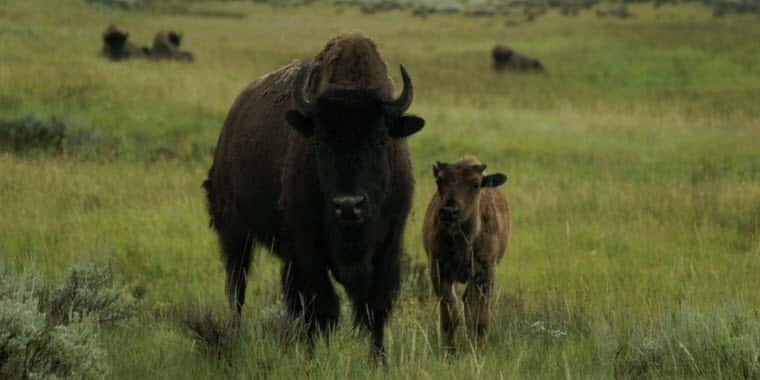Montana Governor Steve Bullock has vetoed two bills from this past session that dealt with wild bison.
On April 29th, the Governor vetoed House Bill 132 which would have provided additional clarity on the definition of wild bison. The bill was sponsored by Ken Holmlund from Miles City and was supported by county commissioners from Garfield, Valley and Phillips counties.
Currently in Title 81, the Livestock title, wild bison are defined as a bison that has not been reduced to captivity and is not owned by a person. Title 87, the Fish, Wildlife and Parks title, defines wild bison simply as those that have not been reduced to captivity.
This bill would have made the definitions the same in both titles and would have clarified what it means to own a bison by adding language that requires payment of the livestock per capita fee. Therefore, bison that have ever been subject to the per capita fee cannot be considered wild.
Montana Farm Bureau Federation supported the bill because it provided uniformity in the law, clarity to the ownership provision and prevented “liquidity” in the definition, meaning it assured that a bison which was once considered to be domestic could never be called “wild.”
Bullock though said the bill created more confusion than clarity and his attempts to amend the bill were rejected.
The Governor said the bill abandoned the current workable definition for a totally new one. He was concerned that the bill did not say whether conditions would apply to a herd, a single animal, or to an animal’s offspring. He commented that though well-intentioned, these changes present significant, adverse consequences for bison management in Montana.
Then on May 7th, Bullock vetoed House Bill 332, introduced by Joshua Kassmier of Fort Benton, which would have given county commissioners authority to approve the transfer of bison into their county. The bill included a set of criteria to approve or deny the translocation including the animal be brucellosis free, not a threat to public health or safety and the relocation would have had to been consistent with the county’s growth policy. Tribal entities would have been exempt from those requirements.
Supporters of the bill included Farm Bureau as well as the Montana Stockgrowers Association.
In his veto of the bill, the governor said the bill would set the dangerous precedent of supplanting the state’s management of its fish and wildlife with county regulation. “Montana’s wildlife is held in trust for all citizens of the state, not just those of a county,” wrote the Governor.
Bullock went on to say that per existing statute, any relocation of bison must include a management plan that contains provisions for animal health protocols, animal identification and tracking protocols, containment measures, and a number of contingency measures. Also included are requirements for protecting public safety, not exceeding range carrying capacity, and identification of long-term funding sources for management activities.
He closed saying, “These laws and processes provide ample opportunity for public input from all parties, and especially from county government.”




